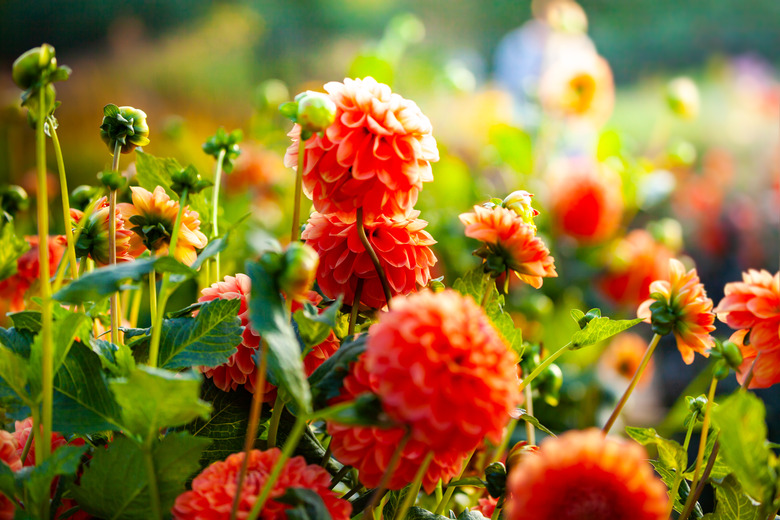My Dahlia Plant Has Blooms That Don't Open
We may receive a commission on purchases made from links.
The dream of a dramatic summer garden centered around dahlias (Dahlia spp.) in full bloom quickly turns to a nightmare when those promising flower buds refuse to open. Unfortunately for dahlia lovers, some tiny insects may drop the curtain on the fabulous flower production before its opening performance. They strike wherever dahlias grow, whether as perennials (in U.S. Department of Agriculture plant hardiness zones 7 through 10) or as summer stunners lifted for the winter in colder areas.
Thrips Larvae Eat Developing Petals
Thrips Larvae Eat Developing Petals
When a dahlia has discolored buds that don't fully open or produces flowers with a dried, brown base if they do, suspect a Western flower thrips infestation. The slender insects, measuring less than 1/20 inch and colored yellow, orange, or brown depending on their stage, lay eggs in a dahlia's new buds. Their larvae feed on the developing petals, but when the buds begin opening, the larvae are usually gone. Thrips are most active between late spring and midsummer.
Most insecticides have little effect on thrips feeding inside buds. The best chance of controlling the pests comes with preventive cultural methods. These include:
- Mowing tall grasses and eliminating weeds growing near the dahlias. The insects overwinter on them as eggs and move to the dahlias when their hosts die back in spring or summer.
- Removing old flowers and disposing of them in sealed plastic bags. They sometimes attract thrips.
- Keeping the dahlias well watered and misting them frequently with a fine spray of hose water. Thrips favor dry conditions.
If cultural methods don't manage the problem, consider using spinosad. It's an organic, microbial-based insecticide capable of penetrating dahlia bud tissue to reach feeding thrips.
Mites Infest Dalia Buds
Mites Infest Dalia Buds
Visible only under a microscope, spider-related broad and cyclamen mites infest dahlia buds during cool, wet weather. If the buds open, the flowers are discolored and stiff. If they don't, they're discolored and distorted and may fall off the plants.
These mites resist most miticides by feeding within the buds. Cultural management is restricted to pruning infested garden plants back to the ground and saving their tubers. Use clean, sharp stem cutters disinfected in rubbing alcohol between cuts to prevent the pests from spreading.
Isolate container dahlias at the first sign of mites and spray them with plant-based, ready-to-use neem oil. Treat them between late evening and early morning to protect honeybees. Wear the same protective clothing as you would to spray spinosad along with a respiratory mask.
Spray the dahlias until the oil drips from all their surfaces, including both sides of the leaves. It kills all stages of the pests and leaves a bad-tasting residue that discourages their return. Repeat every one to two weeks depending on the severity of the problem.
